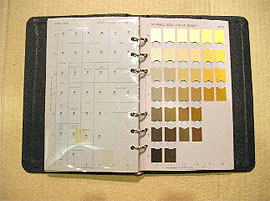Lichens rock!
Lichens—a mutually beneficial marriage of fungi and algae—build soil in some of the Earth’s most extreme environments.
Lichens tolerate heat, cold, and drought. They pioneer soil-less surfaces, like rocky mountain peaks or desert boulders. Lichens release organic acids that very slowly dissolve rock. Over centuries, they weather precious nutrients from barren rock and form thin soils that mosses, grasses, and eventually trees can colonize.
Mutual Support Societies
The fix on nitrogen is in! Some soil bacteria make fertilizer in return for food. Rhizobium and other nitrogen-fixing soil bacteria transform nitrogen gas in air to nitrogen fertilizer.
No plant can take nitrogen directly from the air, but legumes have evolved a cozy arrangement with nitrogen-fixers. These plants feed the bacteria energy-rich carbohydrates, while the bacteria feed the plants nitrogen in a form they can use to grow. Beans, peas, peanuts, and other protein-rich foods owe much to these talented soil organisms.
Fungi free up nutrients. The vital nutrients that all organisms need—nitrogen, phosphorus, and other elements—are mostly “locked” away in dead plants. Fungi decompose wood, leaves, and roots by secreting enzymes into the soil. The enzymes break down carbon compounds in the plant matter. In the process, they release nutrients back into the soil to feed the fungi, along with growing plants and microbes.

- Man matching sample to Munsell Color Book
- John Kelley/USDA NRCS

- Munsell Soil Color Charts, 1954 edition
- Displayed in memory of Thomas Levermann, who worked for the Natural Resources Conservation Service and was passionate about soils education.

